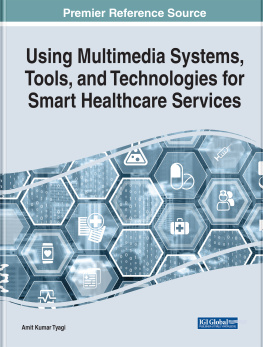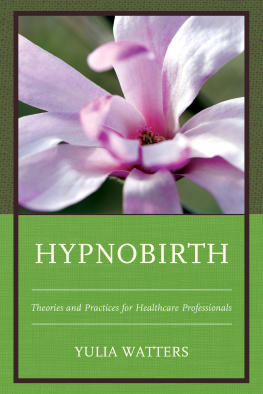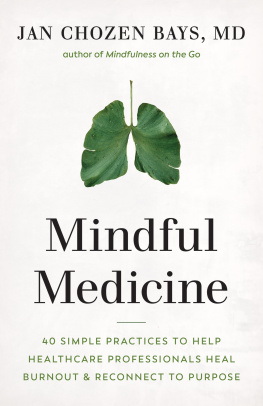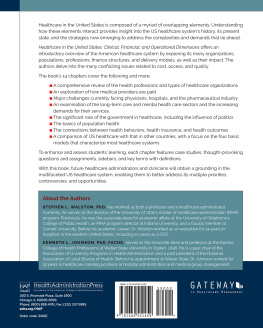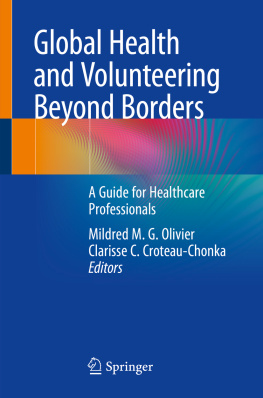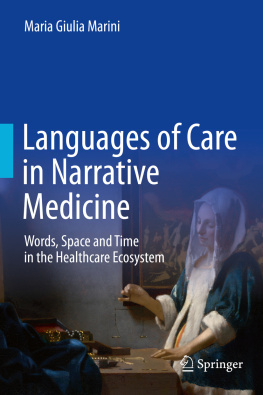Foreword
Medicine, more than any other field of human activity, is surrounded by a halo of secrecy. Mutual recognition by professionals reigns here. The very notion of professionalism in the English context applies only to doctors, lawyers, and priests. Hence, besides being a reason for snobbery, this also underlies the well-known detachment that doctors demonstrate towards the problems of "others" in their everyday sense.
Social practice aimed at alleviating human suffering associated with diseases is the best definition of medicine. Professionals doctors and nurses identify, study, and recognize diseases, as well as diagnose their individual cases. The boundaries of this relatively specified field medicine are changing under the influence of forces striving to medicalize conditions that are not diseases and include practices not peculiar to physicians and not accepted by them.
Quite recently by historical standards (some 120130 years ago), professional medicine in its present form was only emerging and was unavailable to most people. Even now, most of the population in Russia, Brazil and other BRICS countries, not to mention countries below its "lower" borders, has limited access to medical care. At the same time, health problems, or rather the suffering associated with what people understand to be diseases, are vital and daily. There is a constant and strong flow of aspirations and practices, which partially overlaps the field of competence assigned to professional medicine. It is precisely the unsatisfied demand for medical care, rather than folly, which determines the situation where "everyone understands in medicine." In a broader sense: more or less actively, people practice self and mutual treatment everywhere. This is as inevitable in life as eating.
Due to the excessive formalism of the authorities, restrictions on self-medication and mutual aid in the Soviet Union were probably harsher than anywhere else. In addition to rigorous government regulation, physicians were intolerant to self-medication and any practices not legalized in public health facilities; and there were virtually none other at the time. Hence, after 1988 there was a marked explosion of various widely circulated "medical manuals" and public practices unimaginable under Communist control.
The revolutionary health legislation enacted in 1993 could have become the most important event for the development of alternative and complementary practices in medicine. Unfortunately, as in many other spheres of public life, promises of innovations of the time were not implemented. The opportunities for healers to work legally were reduced to the extent that virtually only medical professionals could legitimately practice alternative and complementary interventions. A government institute functioning under the auspices of the Federal Ministry of Health issued national certificates authorizing doctors to practice alternative methods of treatment.
The past decade in Russi a has been marked by government recognition of some alternative practices as part of medicine (osteopathy) and the expanding intervention of religious organizations in certain aspects of medical care; a reference to homeopathic remedies has appeared in the federal law on circulation of medicines. With no intention to include "energy informational practice" or "manual therapy" in the scope of scientific medicine, the government licenses such activities on the same basis as proper medical care. In contrast to the common understanding of the need for evidence-based practice in medicine, this increasingly erodes the boundaries of "normal" medical practice.
Russian healthcare has now been shrinking for more than fifteen years. This trend most pronounced in small towns and rural areas has brought about a massive decline in access to healthcare. Consequently, in recent years , for the first time in Russian history, the government acknowledged the need to legalize the situation when people without relevant professional training would be authorized to provide care in remote villages. Lack of access to professional medical care forces a substantial part of the population to turn to healers and other helpers.
The book Informal Healthcare focuses on a systematic qualitative study of health-related practices and attitudes that are not entirely within the field of professional medicine, or rather medicine institutionalized by the Russian state. It can be expected that at least part of the professional medical community and public health experts will be wary about the book. First, because qualitative research is still not widely used in medicine and healthcare. Second, because the picture painted by the author can be regarded as an unsightly image of reality in the mirror of a method which makes little sense to physicians.
A great merit of the book is a systematization of the practices of various health care actors. The perception of their methods and the selected approach to classification are sometimes paradoxical and judgmental, but the author presents them quite convincingly. The results of empirical studies are likewise clearly presented.
This book may be of interest to the English reader primarily because it gives a detailed picture of an understudied aspect of contemporary Russian life, where many elements seem archaic at first glance. The backdrop for this picture is formal Russian healthcare with its Soviet legacy, unique terminology, and specific regulations, which the author also meticulously analyzes. Offering a wealth of factual information and original classifications, the book stimulates further, including comparative, research in this area.
Vasily Vlassov
President of the Russian Society for Evidence Based Medicine
Professor of Public Health at the National Research University Higher School of Economics in Moscow
Author's note
The ide a for this book came from searching for an answer to a seemingly trivial question how and with whose help are Russians today fighting diseases and maintaining health outside the scope of the formal healthcare system?
The World Health Organization (WHO) and the national legislation give extremely broad definitions of "healthcare system". They include all health-related aspects of social life. However, in public and ordinary speech in Russia, this notion is most frequently used to designate formal healthcare institutions under public administration. That is why it is possible to use regulatory measures and public financing to "reform", "develop" or "modernize" the healthcare system.
When we speak about the healthcare system in the second, narrow, meaning (and that is what I will use in this book), it is obvious that numerous substituting or complementary health maintenance practices exist beyond its scope, along with associated providers of services and goods. I believe that to understand the magnitude and functioning of this variety of activities, one has to start with routine sociographic work aimed at revealing, structuring, and providing a phenomenological description of the elements of this diversity.
For ordinary people, such health practices are a part of their everyday life. Everyone has some personal experience to share. However, we know little about this sphere in general. For state statistics, public health protection is limited to the activities of medical, pharmaceutical, and sports and fitness organizations. Therefore, they do not record anything beyond this. Social sciences focus on selected institutions and practices that substitute the healthcare system in Russia, such as healing and alternative medicine. However, in general, this sphere is understudied and depicted in a rather fragmentary manner.
Sociography, which includes observing and recording simple facts and their relations, is useful when it precedes theoretical constructs, goes before reasoning about habitus or transaction costs with regard to Russian realities. In this context, its findings serve as a basis for scientific problematization and the development of explanatory concepts, as well as for decision making in public administration. It also provides the necessary ground for comparative studies. On the example of alternative health maintenance practices, we shall see that the resulting picture of reality may significantly differ from the dominant public perception of the arrangement and magnitude of such practices. These considerations clearly show why it makes sense to embark on a description of those social phenomen a which seem to be of no big interest either to the academic community or the state.


